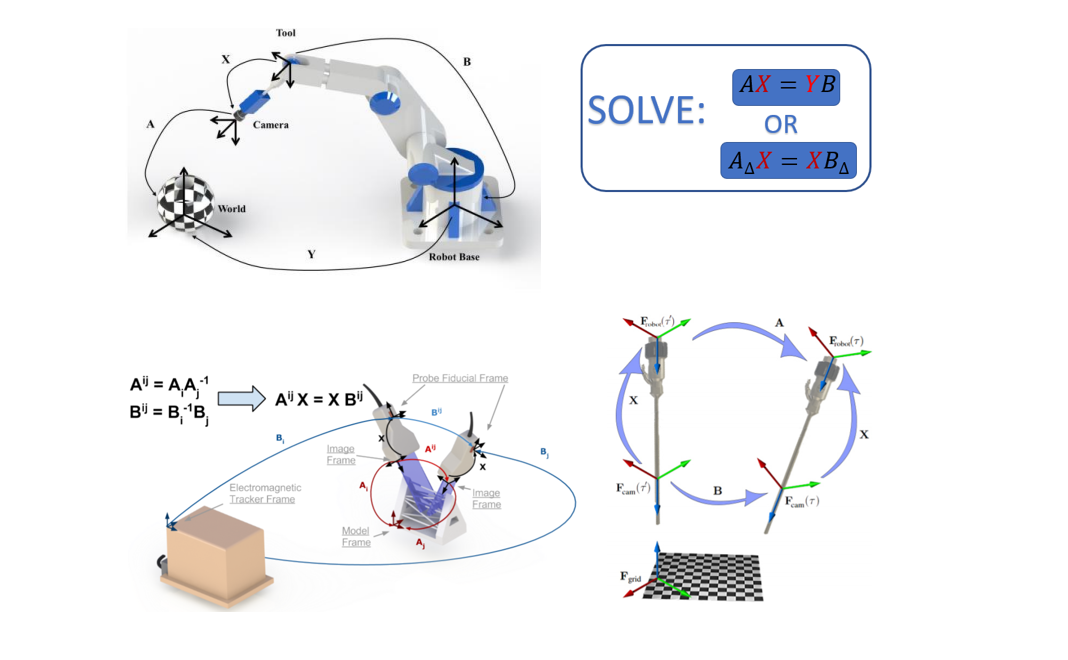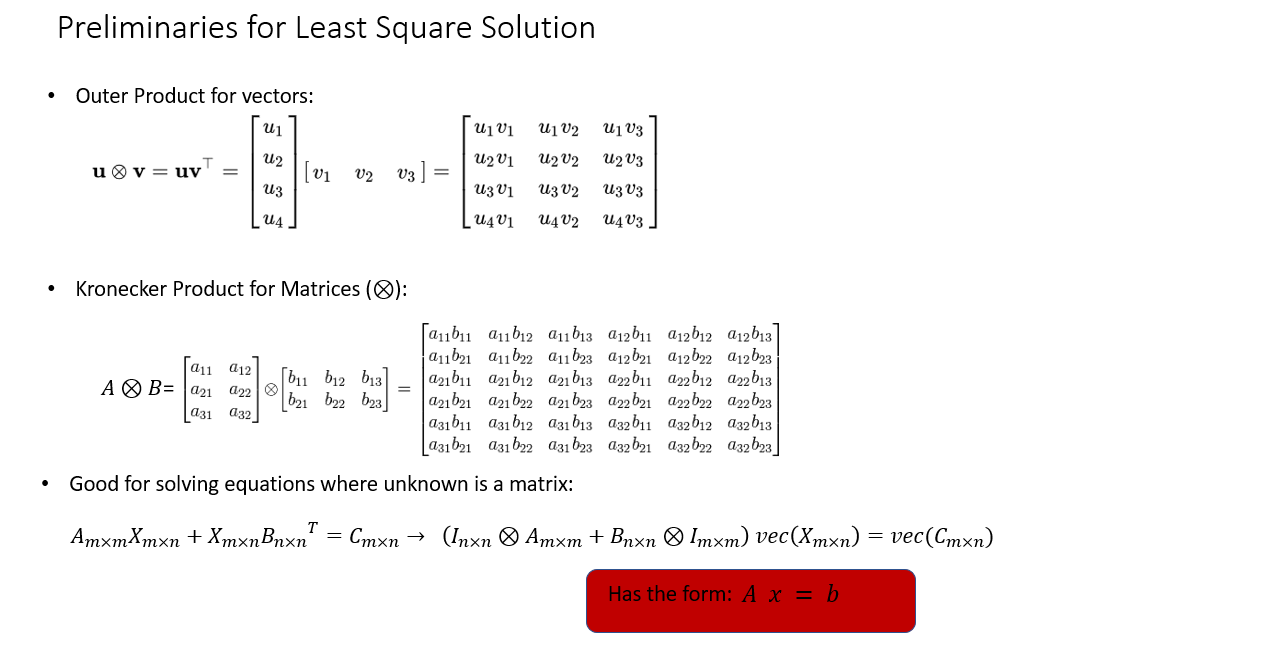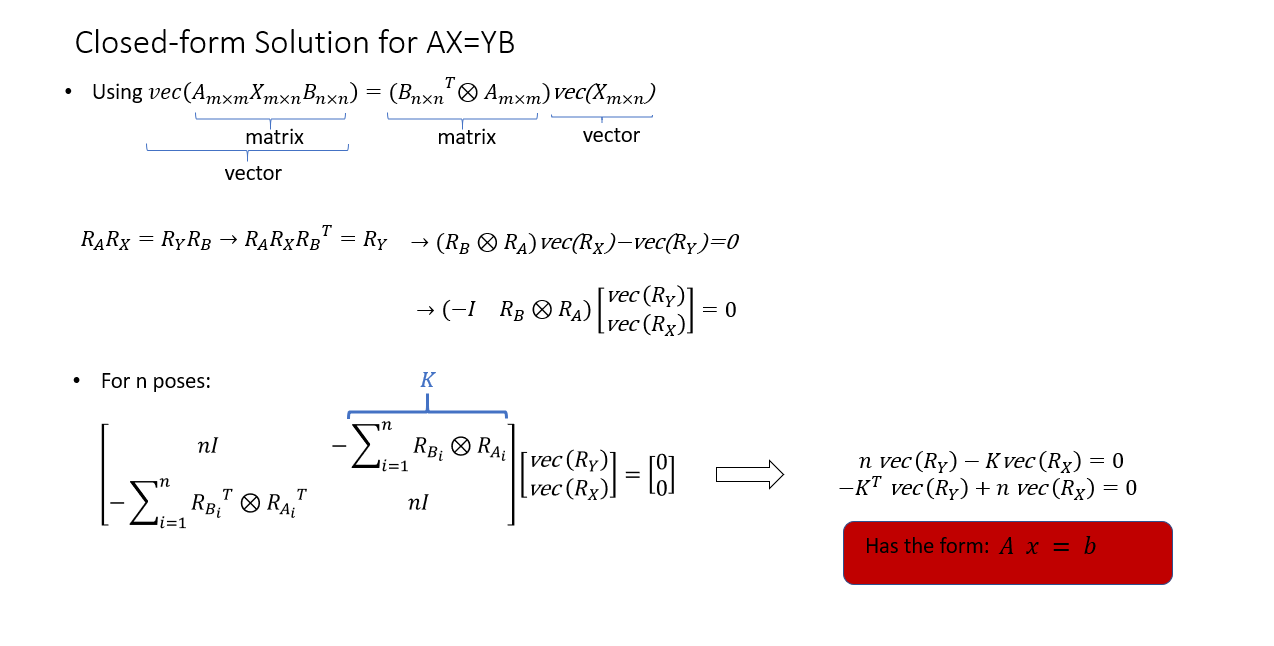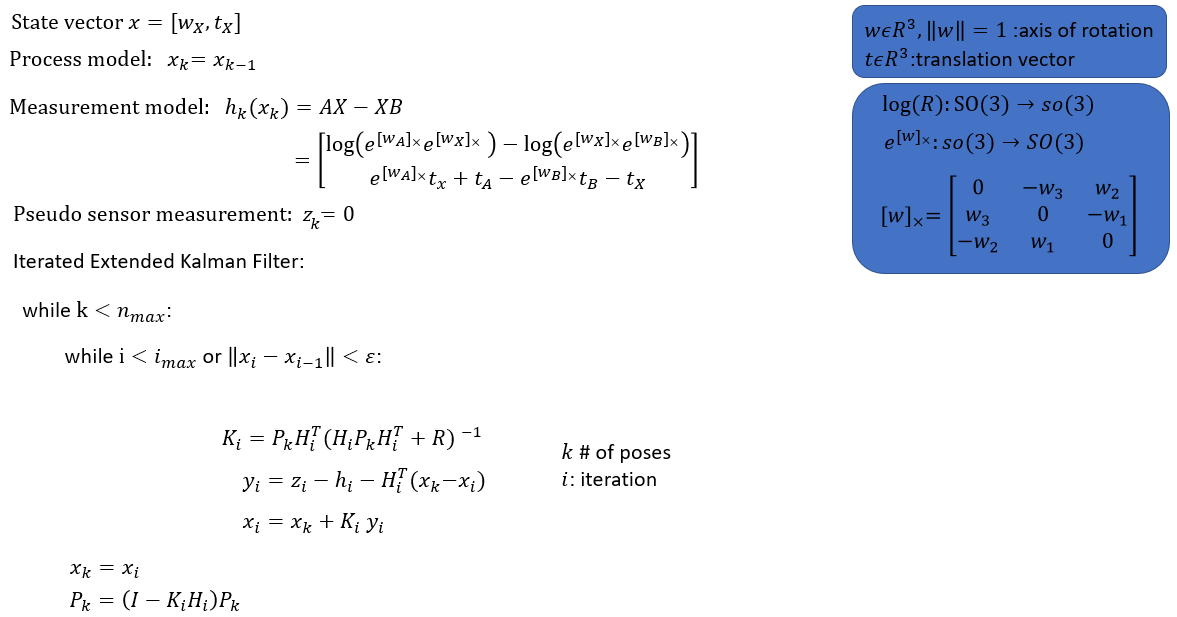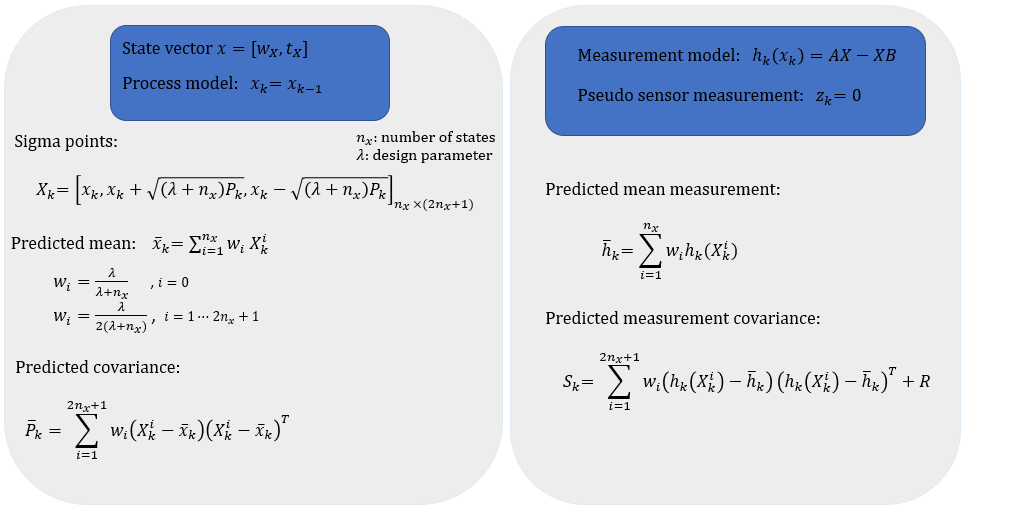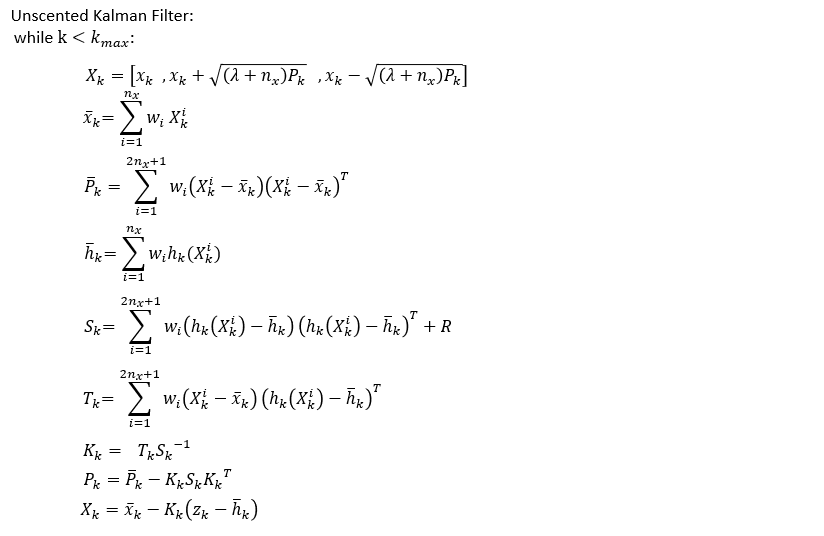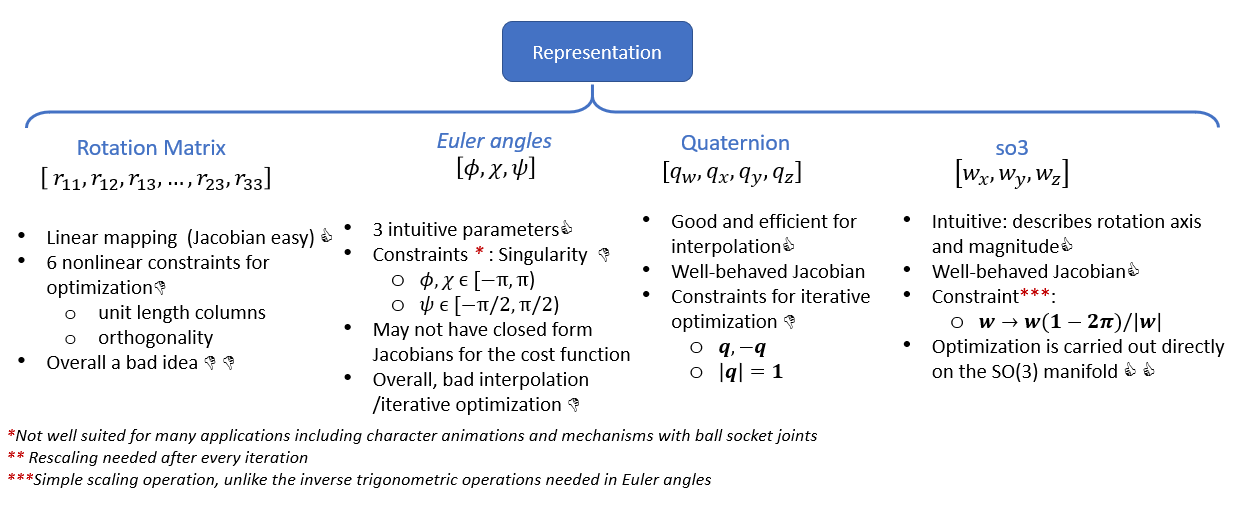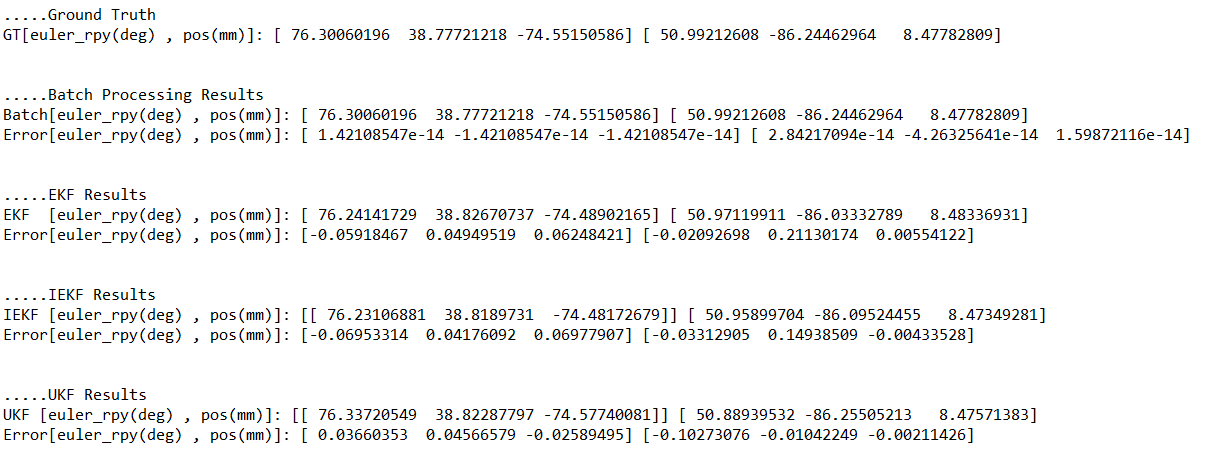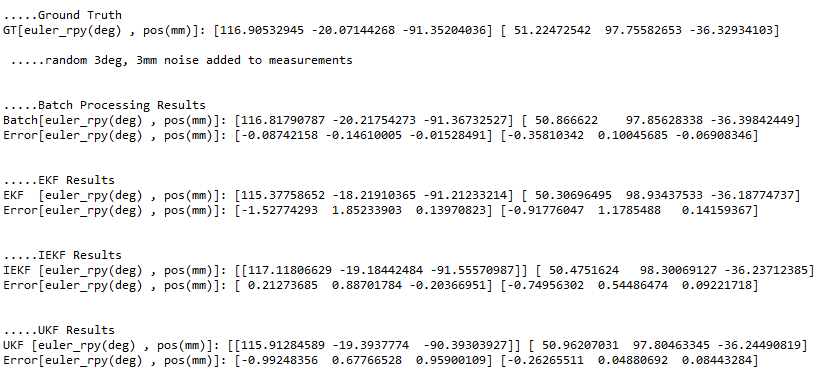POSE ESTIMATION FOR SENSOR CALIBRATION
Many sensor calibration and pose estimation problems in robotics require solving equations of the form AX=XB or AX=YB to obtain the homogeneous transforms X and Y from a set of (A,B) paired measurements.
Pose_Estimation.py has several implementations that can be used based on the application needs. If there is no sensor noise, theoretically, you need 3 unique poses (rotation axis) to get a solution. In practice, there is almost always sensor noise.
Batch Processing
Batch processing class formulates the problem using Kronecker product and finds the least square solution using n pairs of data. Kronecker product is a generalization of the outer product to matrices. It is useful when solving or optimizing a function where the unknown is a matrix.
Iterated Extended Kalman Filter
EKF is well-suited for applications where it takes significant time to collect and process paired measurements. The implementation consumes a single pair of measurements to update the state at every time step and requires many iterations to converge. For highly nonlinear functions such as this application, where we estimate the pose, EKF can significantly underestimate the covariance. To alleviate this, an iterated extended kalman filter (IEKF) can be used. The main difference between EKF and IEKF is the measurement update step. IEKF iterates over the measurement update step for a fixed number of iterations or until a stopping criterion is met. This allows linearizing about better estimates and improves approximation each iteration. Innovation or the norm of the difference between the consequent state estimates can be used as a stopping criterion. It's important to note that, the state covariance matrix is kept fixed during this iterative step and only the state estimate is iterated. If we were to also update the covariance matrix, it would mean we process two identical measurements. Once the iterations end, we use the same EKF update equations to update the state and covariance. Please see [1] for the mathematical formulation of the EKF and IEKF. The implementation here follows the same notation.
Unscented Kalman Filter
The difference between EKF and UKF is in the representation of the Gaussian random variables. EKF approximates the state distribution with a Gaussian distribution and propagates the Gaussian variables by linearizing the process model and/or measurement model. UKF uses a deterministic sampling approach by representing the Gaussian distribution with a set of samples around the mean, aka sigma points, and directly passes the sigma points through the nonlinear process and/or measurement model.
State Representation
State parametrization is also very important. See the summary table below. I highly recommend reading [2] and [3] to understand representations of rotations. The KF implementations here uses so3 parameters to represent rotation. I also recommend reading [4], which formulates the problem using dual-quaternions. Last but not least, remember to check the consistency of the filter to make sure the filter is doing its job.
Examples
Below are two examples with and without sensor noise. The EKF,IEKF and UKF were initialized with an uninformed prior (identity transformation).
References
[1] Havlík, Jindřich, and Ondřej Straka. "Performance evaluation of iterated extended Kalman filter with variable step-length." Journal of Physics: Conference Series. Vol. 659. No. 1. IOP Publishing, 2015.
[2] Blanco, Jose-Luis. "A tutorial on se (3) transformation parameterizations and on-manifold optimization." University of Malaga, Tech. Rep 3 (2010).
[3] Grassia, F. Sebastian. "Practical parameterization of rotations using the exponential map." Journal of graphics tools 3.3 (1998): 29-48.
[4] Srivatsan, Rangaprasad Arun, et al. "Estimating SE (3) elements using a dual quaternion based linear Kalman filter." Robotics: Science and Systems. 2016.
